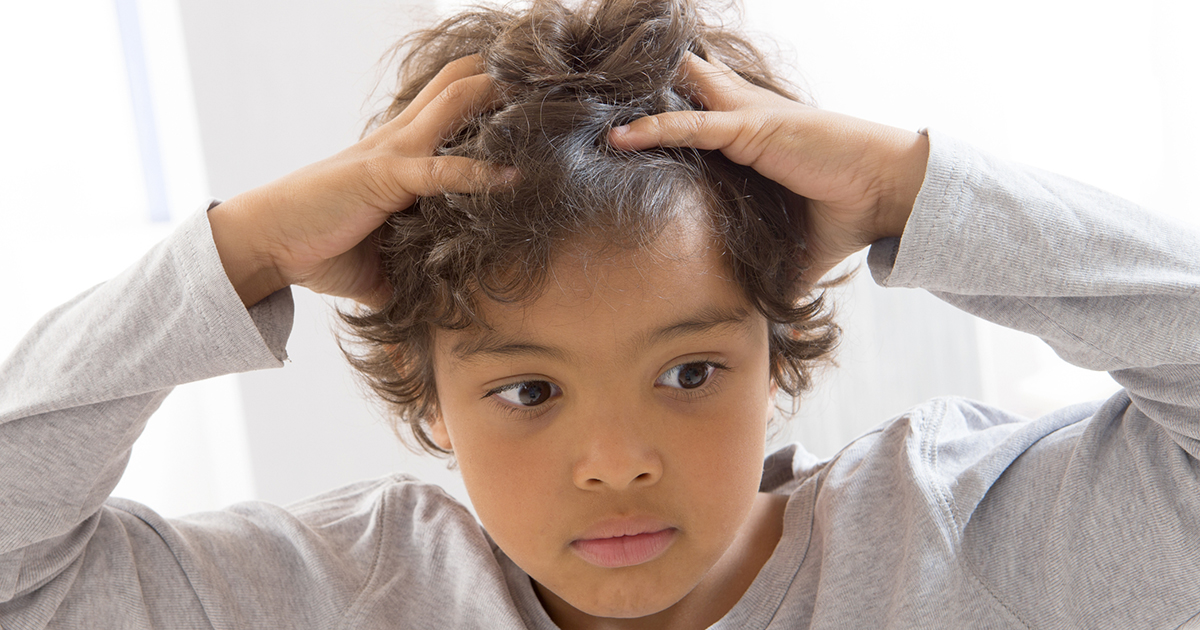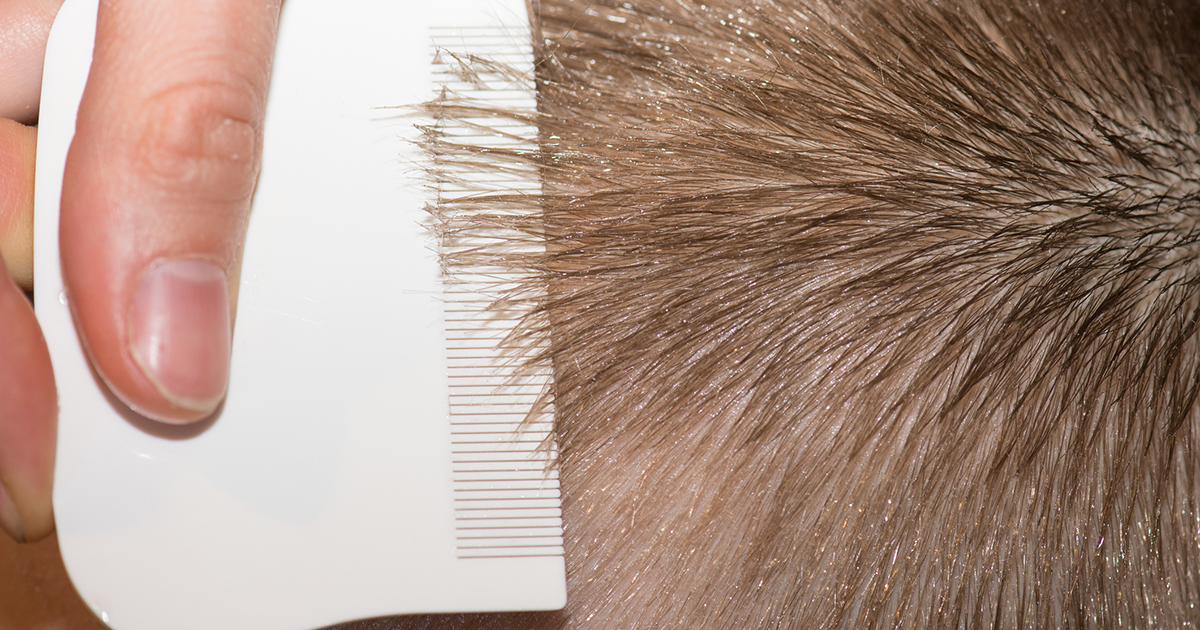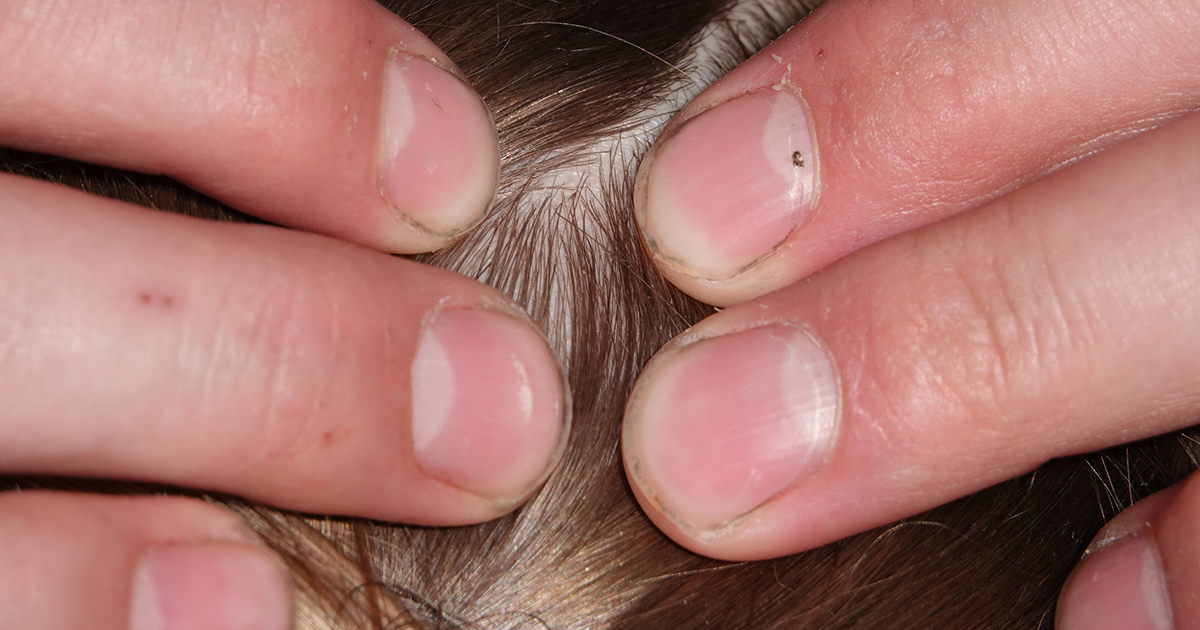Common Signs Of Head Lice
Approximately six to twelve million cases of children with head lice are reported every year. The scientific term for head louse (singular of lice) is Pediculus humanus capitis. You have probably heard about these tiny creatures since you were a kid and are now an adult but never had to deal with them personally. Now, you have kids of your own and dread the day they are sent home with a notification from school that someone in their class has lice. How do you know if your child may have been infected with these parasites? What are symptoms indicating head lice? It's time to find out.
Itching On The Scalp

Itching on the scalp is one of the first and easiest signs of lice infestation. What causes the itching? When lice bite, their saliva causes an allergic reaction in the skin. Depending on the person, the itching and irritation can be more or less. It is simply the fact some individuals may be more sensitive to the lice saliva than others. Although the person may not feel the itching, they may feel a tingling sensation or slight movement in the hair. Keep in mind the irritation can be made worse if the person scratches the scalp. Scratching can lead to sores and red bumps.
Continue reading to uncover the next major symptom of head lice.
Lice On The Head

If you have confirmed having an itchy scalp and red bumps on your scalp, unfortunately, the odds may be you have lice. Head lice feed on blood drawn from the scalp. They are most commonly spread through personal contact, but not sharing personal items will lessen your chance of being infected. Some examples of things not to share include hair tools, hats, pillows, and clothing. Although the lice are not always visible, the eggs, also known as nits, may be more visible to the naked eye. Also, unless you are dealing with a heavy infestation, the itching may not be felt right away. Symptoms may be undetected for up to six weeks.
Continue reading for the next visual symptom of head lice.
Nits On The Hair Follicles

A nit is a term used for a louse egg. Nits on hair follicles may be seen faster than the live lice. They appear as small tan, brown, or yellow dots, and in the beginning, the nits may be mistaken for dandruff, though they do not comb or brush out of hair easily. Should there be a concern of lice, but live lice cannot be seen, you might see nits, which are very firmly attached to the hair shaft near the scalp. Nits use the warmth from the scalp until it is time to hatch. After the nits hatch, the shell remains firmly attached to the hair shaft as the hair grows.
Continue reading to reveal another sensation that may indicate the presence of head lice.
Tickling Around The Head

Adult lice and baby lice, also known as nymphs, create a tickling sensation around the head. Lice do not fly, though they do crawl around the head to lay eggs and feed, thus spreading the infestation. Tickling around the head is mainly felt at night because lice are nocturnal and more active during the night. In some cases, the tickling is not felt at the beginning of infestation because it takes nymphs one to two weeks to hatch. Do not attempt to blow dry the hair as this could spread lice to other individuals in the home. Should the lice get forced into the air, they only live two to three days without the host.
Continue reading for more signs of head lice.
Red Bumps On The Head

Red bumps on the head are another indicator you may be dealing with head lice infestation. These red bumps may also be visible on the neck and shoulders. The result of the lice irritation means naturally you want to scratch. Scratching is what leads to red sores and bumps on the scalp. If you are unable to visibly see lice in the head, the easiest way to look is to wet the hair, which slows down the lice, and thus makes them easier to see. Shine a bright light on the head area and use a fine-toothed comb to part through the hair. Remember lice are very small, like the size of sesame seeds, so take your time and look carefully.
